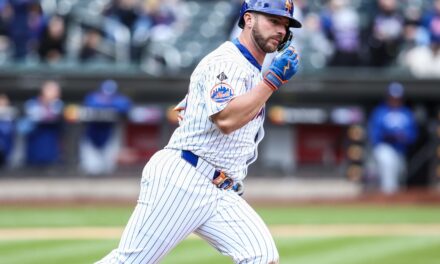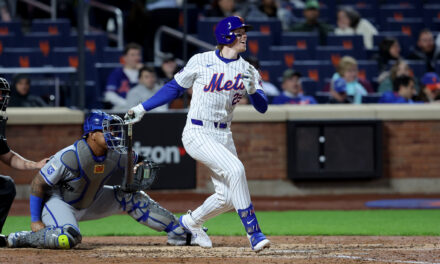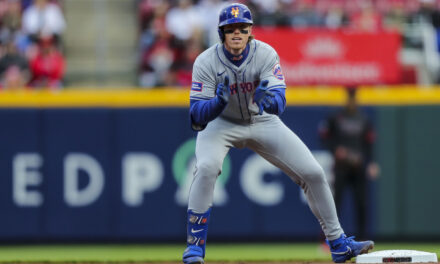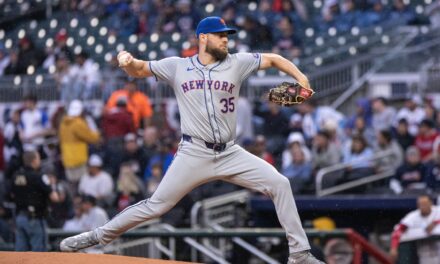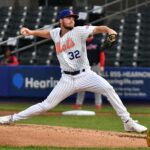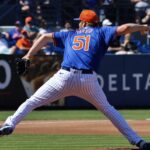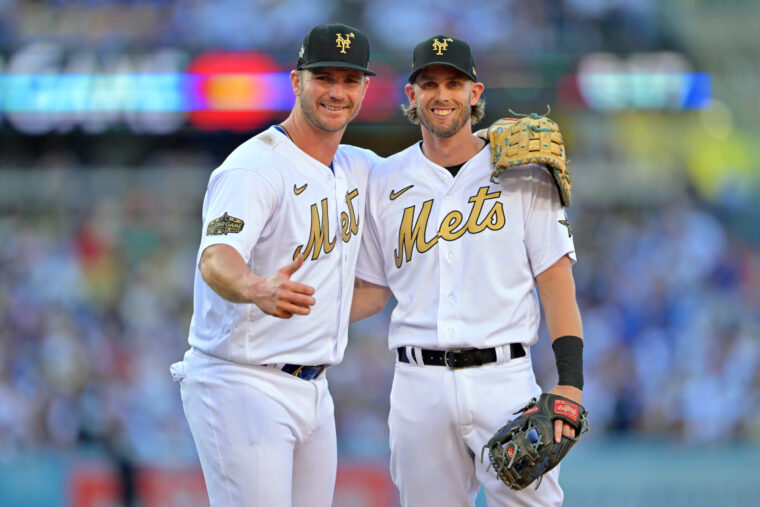
Jayne Kamin-Oncea-USA TODAY Sports
One of the biggest problems with the Mets’ front office turnover over the last three offseasons is the inability to lock up any of their homegrown players to long-term deals before they hit free agency. Brandon Nimmo and Seth Lugo will test the market this year, Noah Syndergaard, Michael Conforto and Zack Wheeler have done the same previously with varying success.
But now with Billy Eppler & Co. in place as the offseason starts, the Mets can look to extend two of their best players with just two years of team control remaining: Pete Alonso and Jeff McNeil. There isn’t a huge debate about whether or not they Mets should try to lock these two down beyond the next two years, so let’s talk about what extensions could look for these 2022 All-Stars.
Pete Alonso
Since Alonso debuted in 2019, no first baseman has more home runs (143) and RBIs (380). Only Freddie Freeman has played in more games. He also has the third-highest wRC+ (138) and total runs scored (310). This has culminated in Alonso having the sixth-highest fWAR (12.1) in that time among MLB first baseman. The reason he’s not higher, given his first-class offensive numbers? His defense.
As much as Alonso has improved defensively, he still ranks as one of the bottom-tier defensive first basemen in MLB across multiple metrics (defensive fWAR, UZR, OAA).
So when looking at an extension, part of what the Mets may consider is how much longer Alonso will be an everyday first baseman? You’d assume by the time Alonso hits his early-to-mid 30s, he won’t be playing the position every day.
The same might be able to said of Matt Olson, the Braves’ first baseman who signed an eight-year, $168 million contract extension with the team after they acquired him from Oakland. Olson signed that extension a couple weeks before his 28th birthday. Alonso turns 28 in December. The two have extremely similar numbers over the last four seasons with regards to OBP (.349 for Alonso, .344 for Olson), BABIP (.274 for both) and OPS (.884 for Alonso, .852 for Olson). Alonso has out-homered him by 26 and knocked in 33 more runs than Olson.
If you look elsewhere, Freddie Freeman just got $162 million over six years from the Dodgers at 32 years old. He’s better than Alonso in most facets of the game, so $27 million average annual value is the high end of what Alonso could get. (Paul Goldschmidt‘s $26 million AAV is also probably a bit large when comparing him to Alonso.) Olson’s $21 million AAV is probably more in line of what Alonso should get.
Alonso is projected to earn close to $16 million in arbitration in 2022, then if Alonso performs even to averages in 2023, he might earn above $25 million in arbitration in 2024. You need to factor that into an extension. So, on top of two years and roughly $40 million to $45 million, would you give Alonso another five years and $100 million, for a total of seven years and $145 million? That’s $20.7 million per year.
Jeff McNeil
Jeff McNeil’s extension is fun. Is he a massive power hitter who puts up gaudy numbers? No. Did he just win the 2022 batting title with spraying the ball everywhere, log at least 90 innings at three defensive positions, and put up more fWAR than any other second baseman in the league? Yes.
McNeil will be 31 as the 2023 season starts, and he won’t be a free agent until right before his age-33 season. Nevertheless, an extension comes down to how much you trust McNeil’s bat. After righting the ship in 2022 after a rough 2021, McNeil now has high-level results in three of his first four full seasons. (His slash line from 2022 is eerily similar to his 2020 line, no matter how you think that season went.)
Someone who may be useful to compare McNeil to is Justin Turner.
Through their age 27 to 30 seasons, here is how McNeil and Turner compare:
- OPS: .824 for McNeil, .817 for Turner
- BA/OBP/SLG: .304/.368/.456 vs. .300/.362/.455
- WAR per 100 PAs: 0.76 vs. 0.75
- K%: 12.2% vs. 16.1%
- BB%: 6.9% vs. 7.2%
- HR%: 2.4% vs. 2.3%
- HR/FB: 6.0% vs. 6.1%
Turner joined the Dodgers for his age-30 season and has been with them since. They were able to unlock Turner’s power, and in the four season after (age 31 to 34), he started walking more, striking out less, and a lot more of his fly balls turned into home runs. Despite a checkered injury history, he’s been a reliable four-win player throughout his early and mid-30s
This isn’t to say McNeil will have Turner’s exact path as a professional, but I think McNeil is certainly capable of being adaptable. Don’t let the 2021 season lead you astray. As teams shift less severely in 2023 (by rule), we might see McNeil try to add more power to his game rather than slap the ball into smaller infield holes. It’s hard to project what players will be as they age, but I think Turner is a good comp. McNeil might have a bit more defensive versatility than Turner did has he aged.
Turner became a free agent before his age-32 season, and he signed a four-year, $64 million with the Dodgers. McNeil, however, has two years of arbitration left before free agency ahead of his age-33 season. He’ll earn around $6.5 million in 2023 through arbitration, and with standards raises, he’d earn around $13 million in 2024. Let’s call that $20 million over two years. If we want to get to closer to $16 million per year for Turner as a comp, we can add another $30 million on top of that over two years and call it four years and $50 million. We’re just spitballing here. Maybe you add another year with a team option to bring it up to five years and $65 million.
McNeil was nearly six wins better than a replacement player at his positions this year. If the Mets feel that his bat will age well–something they’ve failed to do with the likes of Turner, Daniel Murphy, Travis d’Arnaud and others–they should try to lock him down for the rest of his productive career.


